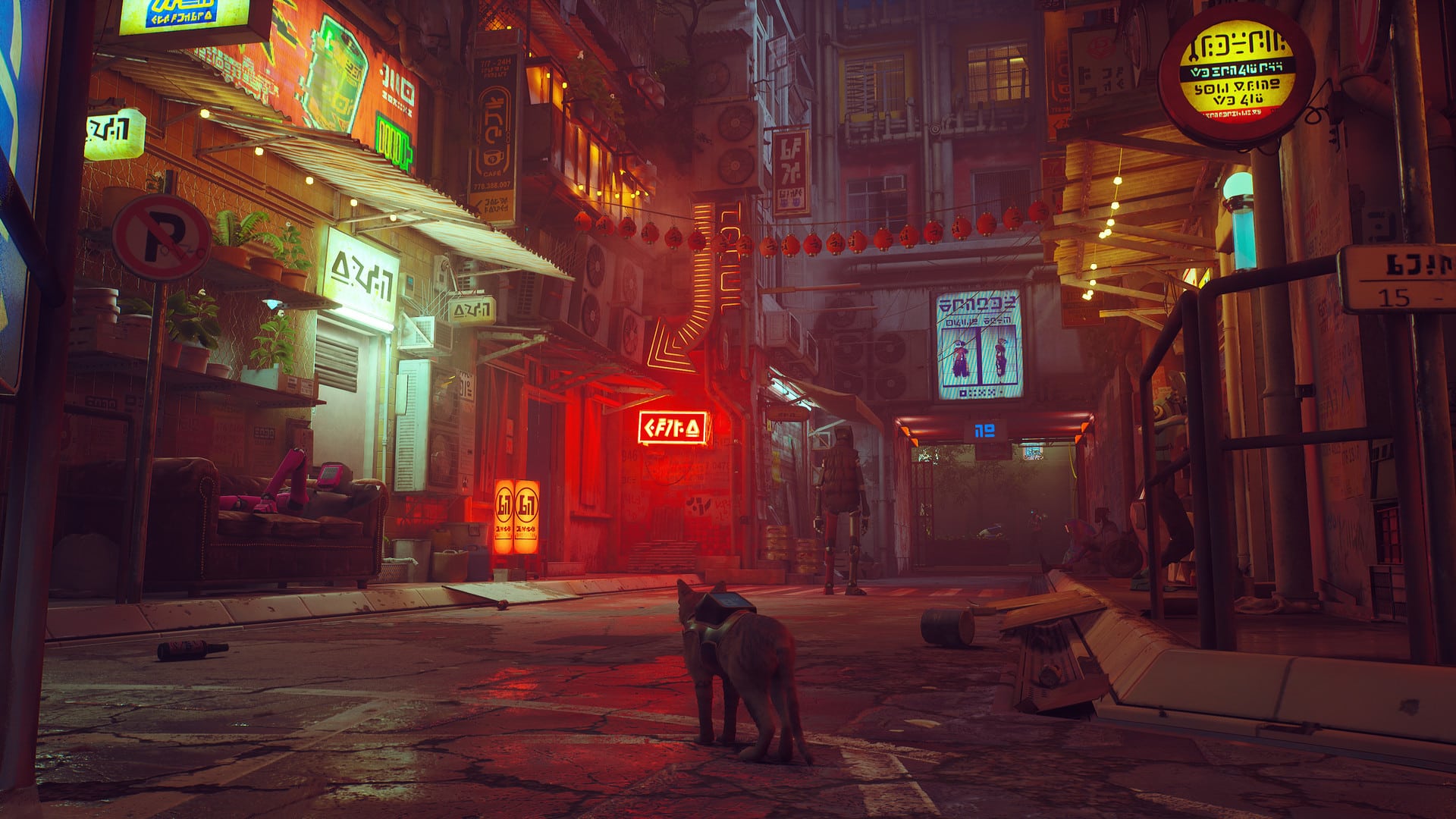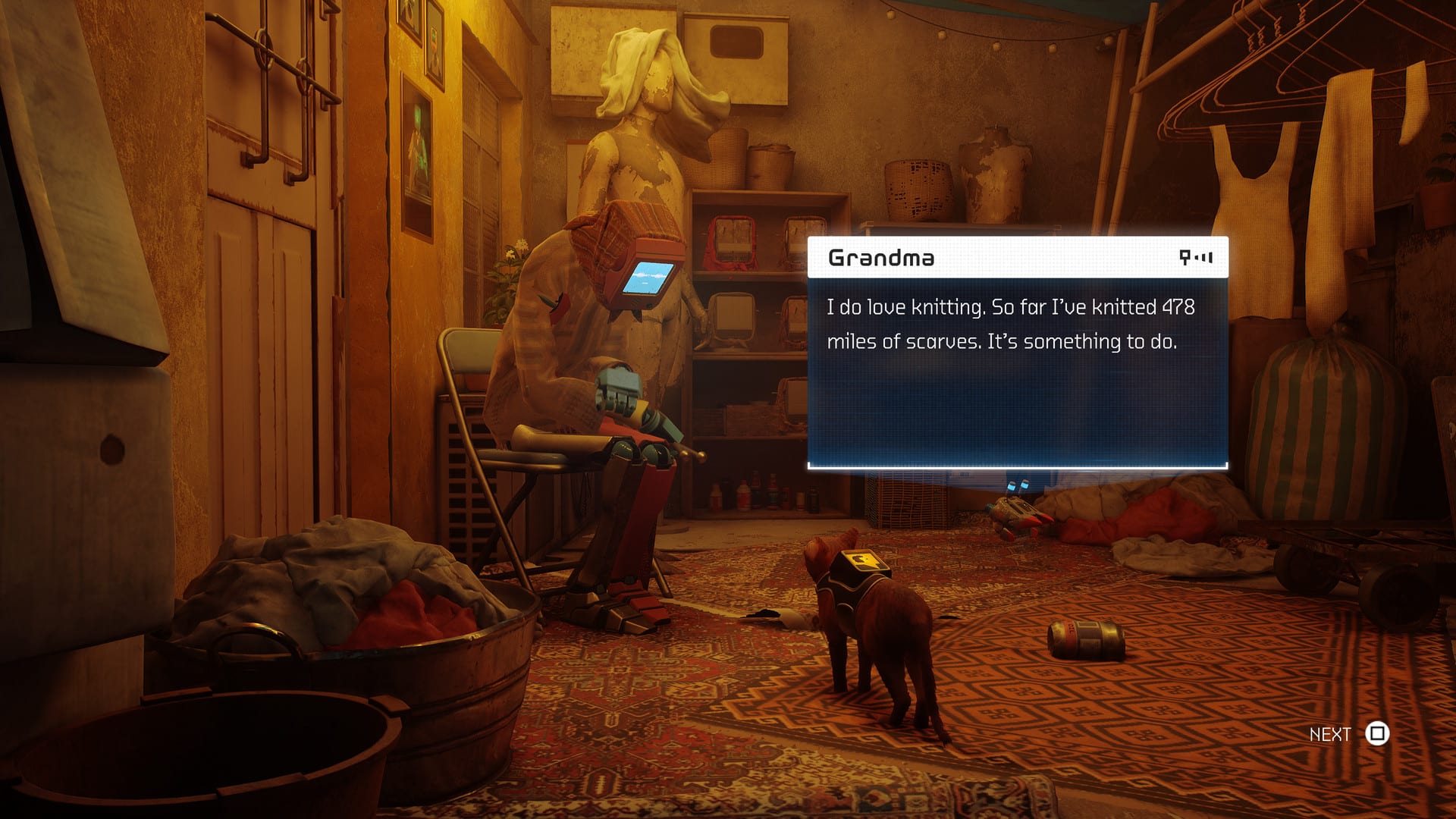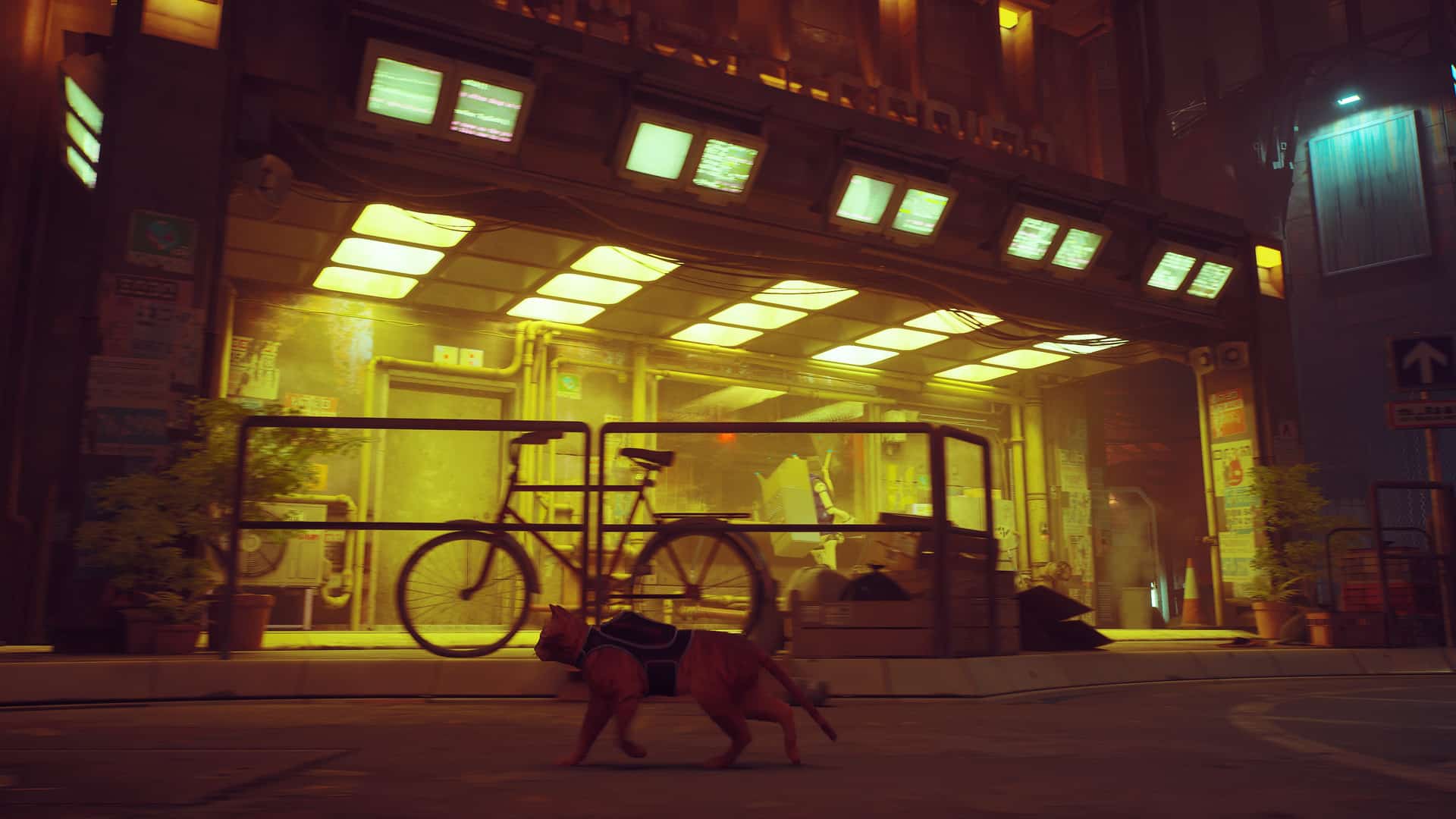Stray Is a Cat’s Perspective on a Dog’s Life
Stray #Stray

This article contains minor spoilers for Stray in its discussion of cats and finding hope in dystopian cyberpunk.
Cyberpunk is inherently dystopian — from Blade Runner to Deus Ex, it’s a genre that examines the excesses of privatization, corporate deregulation, pollution, unfettered technological advancement and experimentation, overpopulation, and other evils of late-stage capitalism. Cyberpunk worlds are often cluttered, cramped, and dirty, drenched in a neon glow pouring over a melting pot of cultural and architectural styles.
Given descriptors like “neon-lit” and “cybercity,” it’s no surprise how well Stray’s world fits this template. Walled City 99 — no doubt a reference to Hong Kong’s infamous Kowloon Walled City, one of the original inspirations for cyberpunk fiction – is a trove of cyberpunk tropes. It is locked from the outside following an unspecified environmental disaster and overrun by decay, accelerated by flesh- and metal-consuming bacteria that we eventually learn to be human-made. What is surprising is the extent to which Stray is able to offer a fresh, gently hopeful perspective on the genre with just two narrative and design choices.
The most obvious, of course, is the choice to cast the player in the shoes (paws?) of a feline protagonist. The titular cat is meticulously modeled in the game’s lavish implementation of the Unreal Engine, with convincing animations and sound for everything from running and jumping to curling up on a cushion. It feels like a subtly tongue-in-cheek riposte to AAA titles’ obsession with the fidelity of human models. It also forces developer BlueTwelve Studio to bring the camera closer to the game world than it might have done with a larger player avatar. The result is an experience that feels more intimate and more literally and figuratively grounded than many cyberpunk counterparts.

You can’t help but linger to look at a book spine, for example, even if you aren’t able to read the script that adorns it. Or you might try to glean a story from an arrangement of cutlery on a kitchen table — particularly when it’s often possible to divert Stray’s tightly paced and breezy (if not always responsive) platforming to the wanton destruction of these arrangements. The narrower field of view and the need to look for feline-friendly footholds also force a different assessment of the environment than the typical cyberpunk fare.
Anti-roosting spikes on top of air conditioning units, for instance, aren’t just set dressing for a cruel world, but an active obstacle to traversal. They are a reminder of humanity’s penchant for keeping animals on humanity’s terms. By the same token, however, the cat’s ability to survive and thrive in this world despite these obstacles, and indeed to outlive the humans, prompts a consideration of nature’s adaptability.
This is particularly apparent when viewed in light of Stray’s second major narrative and design choice. It only becomes obvious after an hour or two, but Walled City 99’s population is entirely robotic; there isn’t a single human in sight. As you delve deeper into the city’s mysteries, you learn that the human population died out hundreds of years ago, even if the so-called Guardians seem quite happy to ape their creators in their day-to-day tasks and ambitions. Some weave clothes from disused wiring, some conduct research to stop the spread of the aforementioned bacteria, and others simply sit huddled in doorways or sprawled drunk across bar tops.

It’s a dog’s life, in other words — one that could quite easily slip into the grimdark excesses of the genre. That it doesn’t is a testament to BlueTwelve’s success with these two design choices and their broader world-building. The robots’ emotional states are instantly readable via their CRT-screened faces. They display an amusing range of moods, but more often than not they show happiness or contentment. Even when the Guardians are angry or annoyed, it’s difficult not to smile at a screen displaying an over-exaggerated angry face emoji.
Likewise, Stray makes for an intrinsically uplifting silent protagonist. There is a raft of anecdotal and scientifically backed benefits for humans to interact with cats, and there is no doubt that BlueTwelve tries to channel many of these.
At the heart of the narrative are the bonds of friendship and companionship: Stray is trying to rejoin a family of cats that live outside the city and in the process forms a bond with a small companion droid and many of the city’s Guardians. These relationships never hit the same gut-wrenching notes as, say, the ending of The Last Guardian, but they do not need to. The point is that they provide an effective counterweight to the grim surroundings — a reminder that even a seemingly hopeless dystopia that’s devoid of humans need not be devoid of humanity.

It helps that many of Stray’s encounters are delivered with a Pixar-like sense of humor and gentleness. There are the obvious gags, like the way Stray mimics FromSoftware’s now infamous animation when opening one set of double doors, or how the controls stop working correctly if it puts a paper bag over its head. And there are the simpler moments of warmth, like the first time the cat meets a Guardian that’s willing to interact with it, or the love heart that’s displayed on an old robot’s screen if Stray chooses to rub against her legs.
Likewise, without spoiling anything, Stray’s ending is not just happy, but hopeful — it offers a future for Walled City 99 that would have seemed impossible at the start of the game. In this way, despite the dystopian setting, Stray may best be understood as an example of so-called “hopepunk” – a positive and uplifting counterweight to the cyberpunk staples that focus on misery.